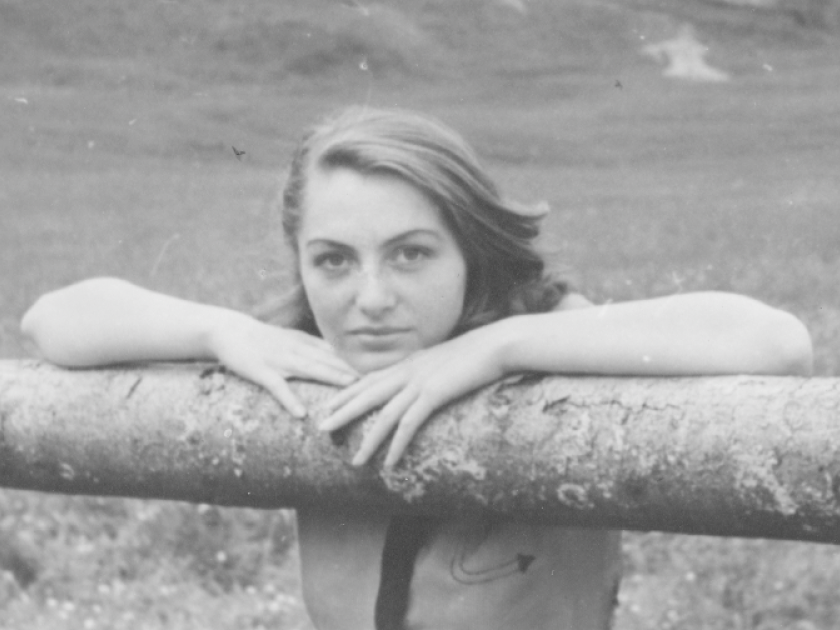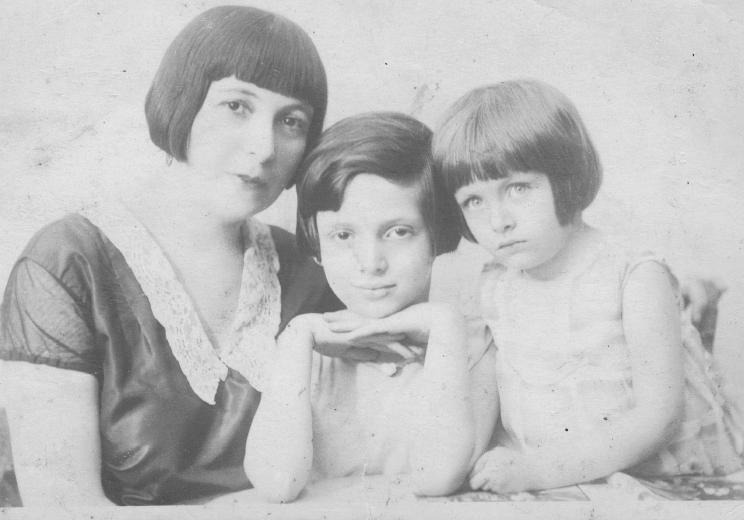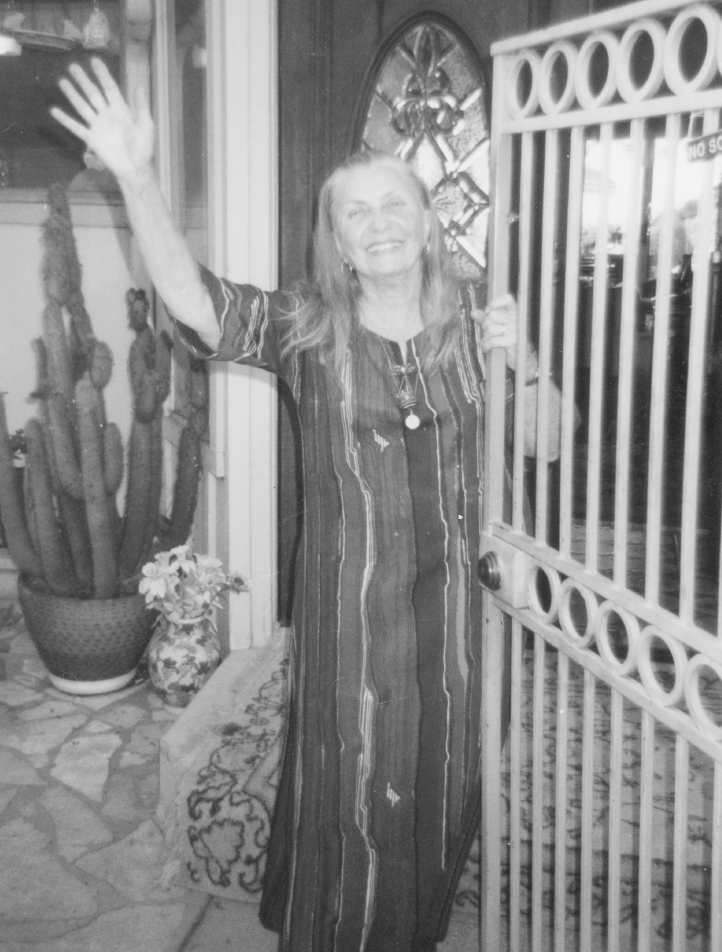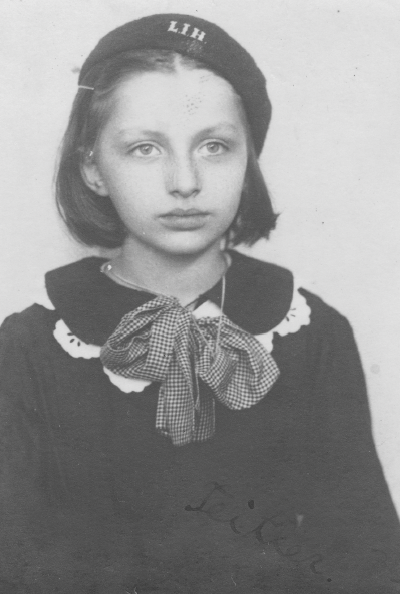
Author’s grandmother Frieda, just after World War II
All photographs courtesy of the author
Though The Blood Years is not the first novel I’ve published, it is the first work of historical fiction I’ve undertaken. It’s also my inheritance. This book is what I’ve made of the stories my grandmother shared with me about being a Jewish teenager in Czernowitz, Romania, during World War II and the Holocaust. Though my nana told me many things, in order to craft a novel, I had to do deep research into many aspects of the time period, including the complex and unique history of her particular region. I sought out other survivors’ narratives and creative work produced by those survivors, and much, much more.
Imagine that someone gives you a precious plate and it shatters. Now imagine dropping those pieces into the shards of six million other shattered plates, some radically different from your plate, some nearly identical. Can you ever put the plate you were given together again? Most likely, no. But what you can do is sift gently and reverently through the shards, finding as many of the pieces of your plate as you can, and collecting other sharp-edged, beautiful, terrible pieces as well. You can take all these pieces and sit with them for many years, and then do your very best to make something with them — a mosaic. A piece of art that honors the original plate, even if it cannot be salvaged, that finds a way to make art from so many broken, priceless things. That’s what writing this book felt like. It’s my nana’s story, but it’s not hers alone. It’s also a tribute to the other Czernowitzers who endured the Holocaust, and the pogroms before — and to all those who perished.

Author’s grandmother Frieda, right, and family
I always knew that both of my grandparents had survived the Holocaust — my grandfather, in Poland, and my grandmother, in Romania. They met and married after the war. I learned about concentration camps in school, and when I asked my nana if she’d been imprisoned, she said, “Not exactly.” What I didn’t understand for many years was that the experience of Jews — and Roma, disabled, and queer people — in Romania was different from the stories made popular in American literature, media, and history books. There were no concentration camps in Romania, but that absolutely didn’t mean that there was no Holocaust. Instead, there was a systemic, slow erasure of Jewish rights and protections that began before the war, intensified during it, and resulted in the Jewish residents losing their status as citizens and their right to do business. After these legal restrictions, the Jewish population was corralled into an inhumanely small and unsanitary ghetto, and waves of brutal deportations and murders ensued.
The war years in Czernowitz, Romania, and the fate of its Jewish population have not been extensively written about. It should be common knowledge that Romania is the country that killed the most Jews of any other country except Nazi Germany. Even before the war, there was a long history of Romanian antisemitism and violent attacks on Jews. During World War II, over 400,000 Jews were murdered in Romanian-controlled areas. Unlike Germany, Romania has not done the work of acknowledging and remembering its terrible history. In fact, during the communist regime , the government blocked access to and even destroyed archival material from the war period, allowing all blame for the treatment of Jews to be deflected onto Nazi Germany. It was only after the fall of the communist government in 1989 that archives were slowly opened, and remaining artifacts were allowed to be accessed. This process is still ongoing, and most people are still unfamiliar with the history in this region and the extent of the murders.

Author’s grandmother Frieda, later in life
This is what happened: After World War I and the collapse of Austria-Hungary, the area around Czernowitz — Northern Bukovina — was awarded to Romania. At the time, ethnic Romanians made up only a quarter of Czernowitz’s 112,000 people. Jews constituted the biggest group, at least 27%, according to the 1930 census, and the city was considered a relatively safe haven for them. Other large groups included Germans, Ukrainians, and Poles. When Nazi-Germany invaded Poland in 1939 to start World War II, the Soviet Union used the invasion as a pretext to occupy Northern Bukovina, including Czernowitz. In 1940, Romania joined forces with Hitler. When the Germans attacked the Soviet Union in June 1941, the Nazis and their Romanian allies quickly overran Northern Bukovina (and Czernowitz). The Germans arrived in the city in early July of that year and transferred control of the area back to Romania.
The Romanians, generally, bent over backwards to carry out the anti-Jewish policies of their German allies. They stripped Jewish citizens of their rights and property. The city’s 50,000 Jewish residents were forced to move into a sealed ghetto. Many residents died from inhumane conditions inside the ghetto, and waves of Jewish prisoners were transferred from the ghetto to extermination camps — most, to Transnistria. Thousands died en route, and those who survived the journey were left to die of starvation, weather conditions, and disease.
It wasn’t until after I published my first novel in 2012 that Nana filled in some of the gaps in the war stories I’d heard. Hearing what she finally shared, I understood why. When I was young, she’d edited out the worst of things to spare me from them. Though she’d shared stories about her family life — going to the countryside for a summer, where she was chased by geese; her mean-as-a-snake-but-incredible older sister Astra; their attendance at a ballet academy, and the relationships made there — near the end of her life, she trusted me with much more of it— the complex relationships between her mother and her father; her sister and her lover; herself and a man who both provided for and abused her; what happened to her beloved grandfather. But I’ll bet, knowing her, even then she held back some of her most painful remembrances as an act of love. And she hoped that someday I could use her experiences in a book. “Just name the character Frederieke,” she told me. “I’ve always liked that name.”

Author’s grandmother Frieda as a school girl
The Blood Years is the story of my nana’s teenage years in Czernowitz, Romania before and during World War II. It’s a love story about sisters. It’s about ballet, and bears, and the ways our families can fail us. It’s a book about the great and terrible things people do in the name of love. And it’s my attempt to do with my nana’s gift of stories what I try to do with all my work — to transform pain into art, to embrace ambiguity, and to find beauty even in the ugliest of moments.
Elana K. Arnold is the award-winning author of many books for children and teens, including The House That Wasn’t There, the Printz Honor winner Damsel, the National Book Award finalist What Girls Are Made Of, and the Global Read Aloud selection A Boy Called Bat. She is a member of the faculty at Hamline University’s MFA in writing for children and young adults program, and lives in Long Beach, CA, with her husband, two children, and a menagerie of animals. You can find her online at www.elanakarnold.com.